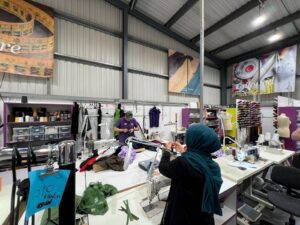E-waste: the fight for the right to repair
With clean technology being the proverbial buzzword these days, the onus is on all technology companies to produce products, processes and services that reduce waste and require as few non-renewable resources as possible.
The reason for this is clear: e-waste is becoming an increasingly burgeoning problem, not only from a financial perspective, but also environmentally.
One of the biggest contributors to e-waste is planned obsolescence and, if we’re honest, this is not a new concept. For the uninitiated, this is the phenomenon that occurs when designers deliberately create a product to have a limited life span.
It’s usually a shorter life span that’s supposed to last long enough to develop a customer’s lasting need and, in turn, then feeds the customer’s desire to then purchase the next shiny new device that is developed.
The motivation for this approach is fundamentally a financial one. After all, why make it easier to fix a device when there is a greater financial pay off in the sale of a new one?
However, the environmental consequence of that approach can be catastrophic. You only have to consider statistics that bear out an incredible 20 to 50 million metric tons of e-waste is being disposed of each year, worldwide, to validate the theory.
It is no wonder therefore that leading environmental organisation Greenpeace partnered with US-based iFixit, a site that hosts repair manuals to help people fix almost anything and also sells repair tools and spare parts, to produce the How Repairable is Your Mobile Device report, a document that paints a rather scathing portrait of the technology industry and its reluctance to take a more environmentally friendly approach.
Mobile device repairability
If you are unfamiliar with the report, in a nutshell it looked at the reparability of smartphones, tablets and laptops and conducted an assessment of more than 40 bestselling models from 2015-2017, with a total of 17 brands represented. The overall summary of findings showed that there were some examples of design for obsolescence, where there was no possibility of users replacing commonly failing parts. Furthermore, the report claimed there were also examples of brands making recently released devices less repairable than older models.
In general, the assessment shows enormous potential for improving the repairability of electronics and for giving users the option to repair their devices to extend their lifespans. The good examples show that this is technically achievable and that brands should be prioritising this in their product design and in the provision of their after sales services.
Making devices that can be repaired to last longer is the most significant step that brands can take to reduce the various environmental impacts associated with electronics manufacturing – from the extraction of virgin raw materials, through to the hazardous chemicals and the large amounts of energy used in manufacturing.
Devices that can be easily disassembled for repair are also easier to disassemble for re-use and recycling – the next stage of a product’s life – once it is no longer possible to use the whole product anymore. Components can be used again and, if not, recycled to recover the valuable raw materials.
The future
As a result of consumer sentiment changes and pressure from organisations like Greenpeace, mobile device manufacturers are going to have to change their approach to product design and recycling.
This revised approach will see an evolution from a linear production method, focusing on the creation, consumerisation and ultimately disposal of a device, to a more circular approach to manufacturing in which products and components are reused multiple times.
To this end, some manufacturers in the specialised rugged mobile device sector have already made great strides. The need to make their devices tough enough to work in some of the most extreme and hostile work environments has driven the ethos to build product components that last for the long term.
These organisations appreciate that, in the first instance, the ability to repair a faulty/damaged device, or the components within it, is the primary objective in a bid to combat e-waste.
However, in the unlikely event that the device cannot be fully repaired, the capacity to recycle the internal components is paramount. This isn’t only from an environmental perspective, there is also a business angle.
If a device cannot be repaired, due to the way that it is built, and a new device has to be issued, this, in turn, impacts an organisations internal IT department due to user and security settings needing to be updated. Now, this may not seem a big issue when dealing with an individual device, but just think about an organisation which deploys thousands of devices to a dispersed, mobile workforce.
The market leader in the rugged mobile industry is Panasonic. With its Toughbook rugged notebook and Toughpad rugged tablets the company has done its bit to redress the obsolescence trend and embrace the more environmentally friendly circular approach to manufacturing.
Batteries are replaceable, rather than sealed within the unit, meaning the user can replace them. Panasonic screens and internal components are easily switched or upgraded rather than their bonded and fixed counterparts.
Panasonic’s Toughbook and Toughpad ranges are designed to last significantly longer than their non-rugged competitors and achieve far lower failure rates. Similarly, Toughbook and Toughpad devices include user-replaceable batteries and other features and components that are backwards-compatible with previous models, resulting in devices with longer lifecycles, that are easier to maintain and that fail far less frequently and don’t become obsolete within a year or two.
The challenge to mobile device manufacturers is a very real one. When you consider all of the materials and energy required to make these devices, having short lifespans and a low rate of recyclability can no longer be the status quo.
Organisations must embrace a new, circular production model in which repairable mobile devices are the norm. If not, this growing e-waste issue is unlikely to show sign of abating any time soon.
Photo by Ken Christensen 















